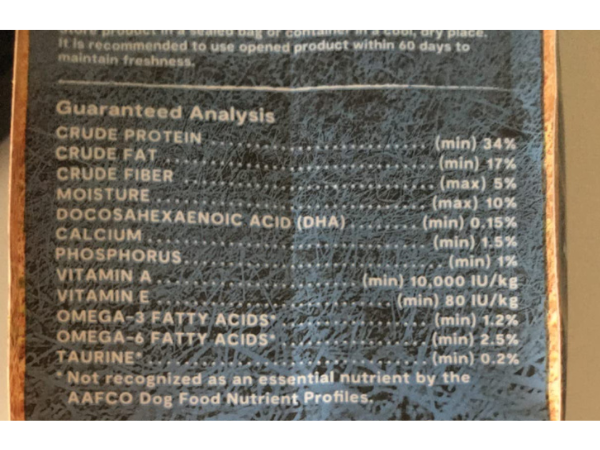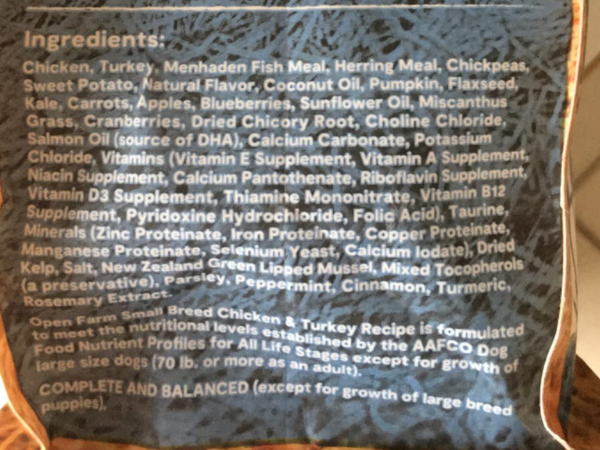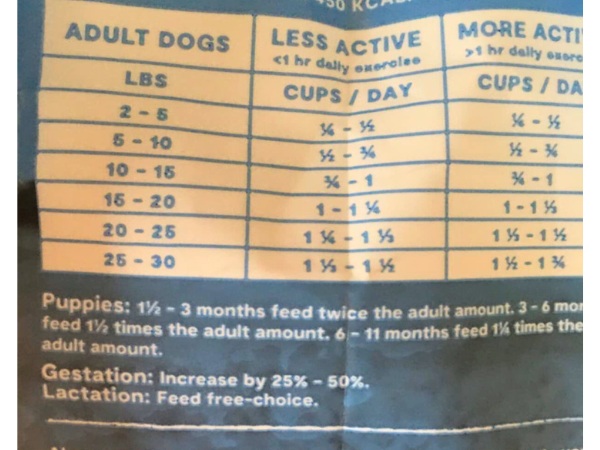Dog food labels can feel overwhelming, filled with claims and confusing terms. Yet, understanding them is essential for choosing the right food for your pup.
From ingredient lists to guaranteed analysis, labels reveal more than you think. This guide breaks down 7 key facts every dog parent should know before buying.
Fact #1: The Ingredient List Order Matters
Ingredients are listed in descending order by weight. This means the first few ingredients make up the majority of the food. The label does not show ingredients by volume or nutritional value, only by weight before processing. This fact can be confusing but is important for understanding what your dog really eats.
For example:
- Chicken: Listed first means the food contains more chicken by weight than other ingredients.
- Corn: Appearing later means it is less than the first ingredients by weight.
Look for specific protein sources at the top of the list. These may include chicken, beef, lamb, or fish. Avoid vague terms like “meat” or “animal by-products” near the top. They do not specify quality or source.
Fact #2: Understanding “Guaranteed Analysis”
The “Guaranteed Analysis” section includes important information about key nutrients in dog food. It lists the minimum or maximum amounts of crude protein, crude fat, crude fiber, and moisture. These nutrients are essential for your dog’s well-being.
Here is what each term means:
- Crude Protein: Shows the minimum amount of protein. Protein supports muscle growth and repair.
- Crude Fat: Indicates the minimum fat content. Fat provides energy and helps absorb vitamins.
- Crude Fiber: Lists the maximum fiber amount. Fiber aids digestion and promotes gut health.
- Moisture: Shows the maximum water content. Moisture affects the food’s texture and shelf life.
Always check the guaranteed analysis to compare dog food options. It helps find the right balance of nutrients for your dog’s diet. This information supports healthy growth and daily energy needs.

Fact #3: The AAFCO Statement is a Must
The AAFCO Statement is a must on any dog food package. This label claim from the Association of American Feed Control Officials shows the food meets strict standards.
This means the food has been tested or formulated to meet specific nutrient levels. These levels support your dog’s overall health, growth, and energy needs.
There are two main ways dog food earns this label claim:
- Formulation Method: The food is made using a recipe that meets AAFCO nutrient profiles.
- Feeding Trials: The food has passed tests where dogs eat it over time and stay healthy.
Choosing dog food with an AAFCO statement means trusting the product is designed to meet your pet’s nutritional needs. This is essential for feeding your dog a healthy, balanced diet every day.
Fact #4: What “Meal” Really Means
The term “meal” refers to a dry, ground form of animal protein. It comes from parts of the animal that have been cooked, dried, and ground into powder. This process removes most water, leaving a concentrated source of protein and nutrients.
For example, “chicken meal” is made by grinding clean chicken parts after cooking them. It is a specific protein, different from “poultry by-product meal”. The by-product meal includes less desirable parts like feet, beaks, or intestines.
| Type of Meal | Description | Protein Quality |
|---|---|---|
| Chicken Meal | Ground, rendered chicken parts (muscle meat mainly) | High |
| Poultry By-product Meal | Ground rendered parts including organs, feet, beaks | Moderate |
| Beef Meal | Ground, rendered beef parts | High |
| Byproduct Meal | Ground, rendered animal parts not fit for human consumption | Varies |
In summary, meal is a concentrated protein source made from animal parts. It provides essential nutrients in a dry form that lasts longer. Knowing the difference between types of meals helps pick better dog food.

Fact #5: “Natural” vs. “Organic” Claims
“Natural” means ingredients are minimally processed. On the other hand, “Organic” follows USDA regulations for farming. Both terms sound healthy but have different meanings and rules behind them.
Food companies use labels like “Natural” and “Organic” to attract buyers. These words do not always guarantee better quality or nutrition. Here is what each means:
- “Natural”: Ingredients come from real food sources and are minimally processed. It means no artificial colors, flavors, or synthetic substances.
- “Organic”: Ingredients are grown without synthetic pesticides, fertilizers, or genetically modified organisms (GMOs). It must meet USDA organic farming rules.
Many brands use “Natural” because it sounds healthy, but it does not guarantee organic or pesticide-free ingredients. “Organic” foods are expensive to produce and require certification.
Fact #6: The Nutritional Adequacy Statement
The Nutritional Adequacy Statement is a key part of dog food labels. The statement shows that the dog food meets the standards set by the Association of American Feed Control Officials (AAFCO).
Here is why matching the food to the life stage matters:
- Puppy: Needs extra protein, fat, and calories for growth.
- Adult Maintenance: Balanced nutrition to maintain health without weight gain.
- All Life Stages: Suitable for puppies, adults, and seniors, but may be less specialized.
The Nutritional Adequacy Statement specifies which life stage the food is for. This helps you choose the right food for your dog’s age and needs. Common examples include Puppy, Adult Maintenance, or All Life Stages.
Fact #7: The Feeding Guide is Just a Guideline
The feeding guide on dog food packages is helpful. It shows how much food your dog might need each day. Usually, it provides a recommended serving size based on weight. This helps pet owners feed their dogs the right amount.

Here are some reasons why the feeding guide is not a strict rule:
- Different dogs have different energy needs.
- Age and health conditions affect food intake.
- Weather and season may change your dog’s appetite.
- Some dogs gain weight easily, others stay slim.
Use the feeding guide as a base. Watch your dog’s weight and energy. Adjust the amount of food if needed. Always consult your vet for precise feeding amounts. Your vet knows your dog’s specific needs best.
| Dog Weight (lbs) | Feeding Guide (cups/day) | Activity Level Adjustment |
|---|---|---|
| 10-20 | 1 – 1.5 | Increase by 10-20% if very active |
| 21-40 | 2 – 3 | Increase by 15-25% if very active |
| 41-60 | 3 – 4.5 | Increase by 20-30% if very active |
| 61+ | 4.5+ | Increase by 25-35% if very active |
But this guide should be adjusted based on your dog’s activity level and metabolism. Some dogs burn more energy and need more food. Others may be less active and need less food.

